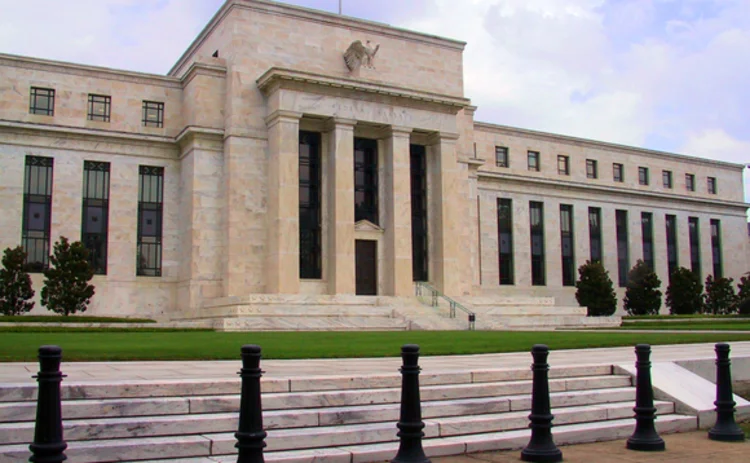
The real exit problem at the Federal Reserve (and ECB and BoE)

Ben Bernanke's testimony to Congress was billed as the occasion on which he would outline his exit strategy. He did provide a list of tools for warding off inflationary pressures. But the list and the rest of the Federal Reserve chairman's testimony are cause for deep disquiet about a much bigger exit problem than quitting quantitative easing: how to exit a decade of serious monetary policy failures. And make no mistake, these failures are as great as during the years from 1968 to 78 or from 1923 to 33.
To judge how much re-assurance Bernanke brought to bear, let's take a look first at a sketch of what the way out from the latest decade of profound monetary policy failure would involve. A key element is the abandonment of inflation-targeting or, as is practised by the Fed, quasi-inflation targeting. The notion that monetary stability means holding the rate of core inflation (as measure by the PCE) to around 2% over the medium-term (two years) is now subject to ridicule.
The ridicule is based on a truth long discovered by Austrian-school economists and popularised by Friedrich Hayek that considerable price-level fluctuations - albeit around a flat path when considered over a decade or even more - are an essential characteristic of continuing monetary equilibrium. A sudden acceleration of productivity growth or improvement in terms of trade should be reflected in a price-level drop. If the central bank resists, the proverbial monetary monkey wrench gets into the machinery of the economy, notably via asset-price inflation. Likewise, during a recession, the central bank should not get in the way of a short-term fall in the price level, in that lower prices now (in highly cyclical sectors of the economy) coupled with expectations of higher prices when recovery occurs act a stimulus to present spending by financially-fit households and businesses. The observed price fall during the recession need have nothing to do with monetary deflation.
In pursuit of the erroneous notion that medium-term inflation should be targeted, the Federal Reserve, the European Central Bank and the Bank of England, all in their distinct ways, fuelled the biggest global credit bubble since the 1920s. Misdiagnosing a benign cyclical dip in the price level during the economic downturn which followed the bursting of the IT bubble as the stepping stone to monetary deflation, and refusing to acknowledge the Austrian school wisdom that a jump in productivity growth coupled with terms of trade improvement can bring a spell of "good deflation" (which has nothing to do with monetary deflation), central banks in the US and Europe pushed hard on the monetary accelerator during the years 2003-5.
Alongside the abandonment of inflation targeting, would be the introduction of a long-term commitment to absolute price-level stability (measured over a decade or more) and the revival of a key role for monetary targeting. This would not mean a restoration of discredited targeting for monetary aggregates outside the control of the central bank, but a new emphasis on the growth of the monetary base, suitable redefined so as to strengthen its control function. In particular the level of reserves requirements would be raised substantially (reserves held by banks at the Federal Reserve together with currency in circulation are the main constituents of monetary base).
The new role for the monetary base in the overall monetary piloting process would be accompanied by a relinquishment of tight control over overnight money-market rates - allowing these to be market-determined. After all, the ridiculous concentration on 25 basis-point changes in official rates has in many respects led central bankers into their biggest mistakes during the latest decade of near-fatal monetary errors.
And while on the subject of abandoning micro-management of micro-changes in official rates, central bankers should surely call it quits in participating in the economic forecasting business. Yes, Arthur Burns, and in some respects Alan Greenspan, were highly talented business forecasters - and their words of wisdom on near-term prospects could rivet audiences. But that is not generally the case. Central bank forecasts are in general no better than any other forecasts and are mostly dead wrong. Yes, policymakers in the course of their work have to look at the range of scenarios for the future but abandoning their obsessive concentration on economic astrology would surely benefit all.
How does Bernanke's latest testimony stack up against this sketch for an exit from past monetary failure? The answer is unfortunately bottom marks on every score.
There is absolutely no mention of any grand design to shift to a better method of making monetary policy than the deeply-flawed inflation-targeting, let alone any admission of those flaws. And again the economic forecasts loom large throughout the report and the testimony.
Bernanke believes this will be a slow recovery and that correspondingly money rates should remain near zero for a long period ahead. But what happens if instead it turns out to be a strong recovery? (And indeed the path of the Chicago Fed National Activity Index, the most comprehensive cyclical indicator of the US economy is now bearing remarkable resemblance to the situation coming out of the deep recession of 1973 to 5). How far behind the curve will be the Fed policymakers?
Humility on this point is non existent. Far from shifting towards a more market-determined regime for money-market rates, Bernanke proposes tightening command control over these. In talking about the exit from quantitative easing, the chairman stresses that there is a new instrument at hand, the rate of interest which the Fed will pay on reserves. How strange it would be in terms of any historical precedent for the central bank to control market interest rates by shifting the rate paid on reserves.
In effect if the Fed were to drive the rate up on reserves to above those prevailing elsewhere in the markets there would be a surge in deposits being held at the Fed. Yes, the Fed would be in command of short-term rates but only by totally destroying any stability in the demand for reserves over time and so making impossible any system of monetary piloting based on reserve targeting. Yet this has been the most tested and proven method of monetary piloting over the course of human history (including the international gold standard).
And when would Bernanke start to use his command authority to raise rates? Well, given that we can assume that the chairman is still in favour of targeting inflation at 2% over two-year periods, the answer is no time in 2010. After all according to the economic forecasts published in his report (to Congress) core inflation will run in 2010 at 1% to 1.5%. and in 2010 at 0.9% to 1.7%. The bond markets seem to broadly share Bernanke's view of inflation given the current implicit inflation expectations built into the spread of yields between inflation-indexed and conventional T-bond yields.
Suppose the Federal Reserve were to abandon inflation targeting as outlined in the sketch. In so far as the markets believed the new plan to be credible long-maturity yields would fall sharply while nearer-term interest rates could rise somewhat. But don't hold your breath. This will not happen under Bernanke or under any likely successor to him as Federal Reserve Chairman next January. It could be said though that the further the successor is removed from the circle of experts and practitioners behind the fateful decisions of the past decade of monetary failure the better the chance that markets would gain confidence in long-run price-level stability.
Now for the good news. A strong economic recovery could indeed be forming despite the total disillusionment concerning monetary reform. And it is implausible that any irredeemable serious monetary mistake has been made yet in the business cycle upswing now taking root.
The rest is conjecture and hope. Or despair.
Brendan Brown is the chief economist at Mitsubishi UFJ Securities
Only users who have a paid subscription or are part of a corporate subscription are able to print or copy content.
To access these options, along with all other subscription benefits, please contact info@centralbanking.com or view our subscription options here: http://subscriptions.centralbanking.com/subscribe
You are currently unable to print this content. Please contact info@centralbanking.com to find out more.
You are currently unable to copy this content. Please contact info@centralbanking.com to find out more.
Copyright Infopro Digital Limited. All rights reserved.
You may share this content using our article tools. Printing this content is for the sole use of the Authorised User (named subscriber), as outlined in our terms and conditions - https://www.infopro-insight.com/terms-conditions/insight-subscriptions/
If you would like to purchase additional rights please email info@centralbanking.com
Copyright Infopro Digital Limited. All rights reserved.
You may share this content using our article tools. Copying this content is for the sole use of the Authorised User (named subscriber), as outlined in our terms and conditions - https://www.infopro-insight.com/terms-conditions/insight-subscriptions/
If you would like to purchase additional rights please email info@centralbanking.com
Most read
- ECB says iPhone is currently incompatible with digital euro
- ‘Do I die, or do I survive?’ Officials reflect on Basel III complexity
- French president calls for expanded ECB mandate








